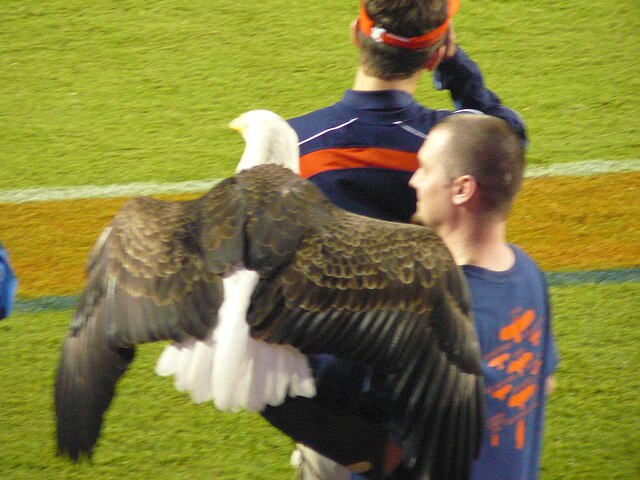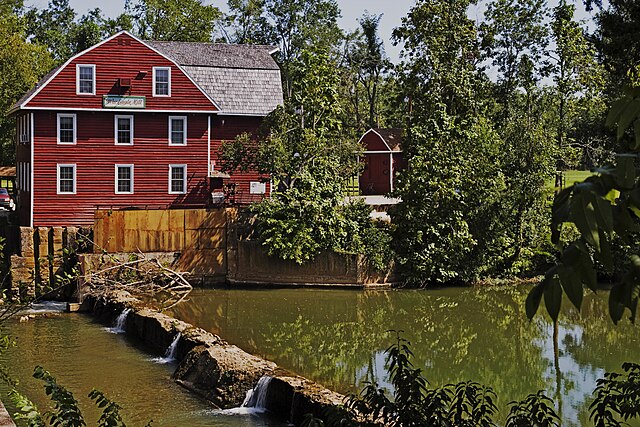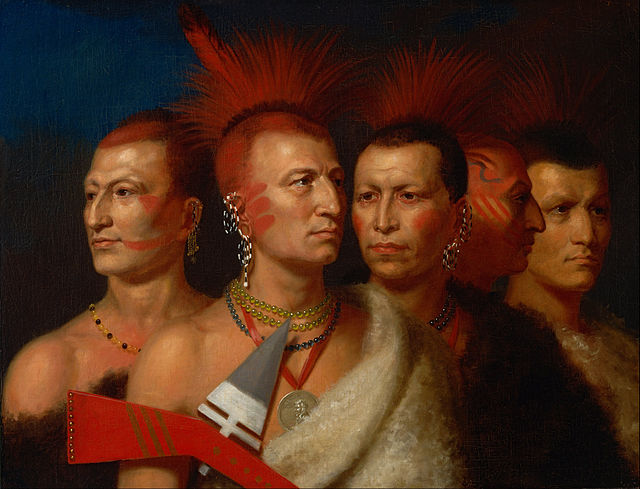Have you ever wondered why thousands of Auburn University fans erupt in unison with “War Eagle!” during football games? This iconic battle cry represents far more than just team spirit—it embodies a rich tapestry of history, tradition, and unwavering loyalty that has defined Auburn University for over a century.
The phrase “War Eagle” isn’t just a cheer; it’s a way of life for Auburn faithful. Whether you’re walking through campus, attending a game at Jordan-Hare Stadium, or meeting fellow Auburn alumni across the globe, this simple phrase instantly creates a bond that transcends generations. But where did this legendary battle cry originate, and why has it become such an integral part of Auburn’s identity?
The Origins and History of War Eagle
Understanding the true origins of “War Eagle” requires diving deep into Auburn University’s fascinating past. Like many great traditions, the exact beginning of this battle cry is shrouded in mystery and folklore, with multiple stories claiming to be the “real” origin.
What we do know for certain is that “War Eagle” emerged during the late 19th and early 20th centuries, coinciding with Auburn’s rise as a prominent educational institution and the birth of its athletic programs. The phrase gained momentum alongside Auburn’s growing football tradition, eventually becoming the university’s most recognizable rallying cry.
The Civil War Connection
One of the most compelling origin stories traces “War Eagle” back to the American Civil War era. According to this narrative, Auburn’s connection to the eagle began during the conflict that shaped the American South. The story suggests that the eagle became a symbol of resilience and strength, qualities that Auburn University would later adopt as core values.
During the Civil War, many future Auburn students and faculty served in Confederate forces, and some historians believe they brought back stories of eagles spotted during battles—birds that seemed to embody the fighting spirit that would later characterize Auburn athletics. While this connection remains largely anecdotal, it provides important context for understanding how “War Eagle” became deeply embedded in Auburn’s cultural DNA.
Early Auburn Football and the Battle Cry
The more documented history of “War Eagle” begins with Auburn’s early football program in the 1890s. As collegiate athletics gained popularity across the South, Auburn needed something to distinguish itself from other universities. The adoption of “War Eagle” as a battle cry provided that unique identity.
Early football games at Auburn were community events that brought together students, faculty, and local residents. The need for a unifying cheer that could rally support and intimidate opponents led to the organic development of various chants, with “War Eagle” eventually rising to prominence due to its powerful imagery and emotional resonance.
The Legendary War Eagle Stories
Auburn University has no shortage of colorful stories explaining how “War Eagle” came to be. These tales, passed down through generations of students and alumni, have become part of Auburn folklore, each adding its own flavor to the rich tradition.
The Most Popular War Eagle Origin Story
The most widely accepted origin story dates back to Auburn’s first football game against Georgia in 1892. According to legend, an Auburn professor brought a wounded eagle he had found and nursed back to health to the game. During the contest, the eagle suddenly took flight, soaring above the field as Auburn scored the winning touchdown.
Inspired by this dramatic moment, Auburn fans began chanting “War Eagle!” The eagle allegedly circled the field several times before landing, as if blessing Auburn’s victory. While historians debate the accuracy of this tale, it perfectly captures the spirit of Auburn football and explains why the eagle became such a powerful symbol for the university.
Alternative Tales and Folklore
Beyond the famous 1892 story, several other tales attempt to explain the origins of “War Eagle.” Each story reflects different aspects of Auburn’s character and values, contributing to the rich mythology surrounding this beloved tradition.
The Wounded Eagle Legend
Another popular version involves a wounded eagle discovered by Auburn students during the early 1900s. The students nursed the bird back to health, and it became an unofficial mascot, appearing at various campus events and football games. When the eagle finally took flight during a crucial game, students interpreted it as a sign of good fortune, leading to the adoption of “War Eagle” as their battle cry.
The Spirit of Competition
Some stories focus less on actual eagles and more on the metaphorical power of the eagle as a symbol. These tales suggest that Auburn students and athletes adopted “War Eagle” because the eagle represented the qualities they wanted to embody: fierce competition, soaring above obstacles, and the ability to see the bigger picture from great heights.
War Eagle in Modern Auburn Culture

Today, “War Eagle” permeates every aspect of Auburn University life. It’s not just reserved for football games—you’ll hear it echoed across campus during graduation ceremonies, academic achievements, and even casual encounters between Auburn family members worldwide.
Game Day Traditions
Game day at Auburn University is a spectacle unlike any other in college sports. The “War Eagle” cheer reaches its crescendo during these events, creating an atmosphere that visiting teams often describe as overwhelming and intimidating.
Before kickoff, the crowd participates in coordinated “War Eagle” chants that build in intensity as game time approaches. The tradition has evolved to include specific timing and rhythm, with experienced fans teaching newcomers the proper way to deliver this iconic battle cry. It’s not just about volume—it’s about unity, timing, and shared passion.
Campus Life and Student Culture
Walk through Auburn’s campus any day of the week, and you’ll witness “War Eagle” in action. Students greet each other with it, professors acknowledge outstanding work with it, and it serves as a universal Auburn greeting that immediately identifies members of the Auburn family.
War Eagle Week
Auburn University has institutionalized its love for this tradition through War Eagle Week, an annual celebration that brings together students, alumni, and community members. During this week, the campus hosts various events celebrating Auburn’s history, traditions, and the spirit embodied by “War Eagle.”
Alumni Connections Worldwide
Perhaps nowhere is the power of “War Eagle” more evident than in Auburn’s global alumni network. Auburn graduates report using “War Eagle” as an instant connection tool, whether they’re traveling internationally, attending business meetings, or simply encountering another Auburn alum in an unexpected place.
The Auburn Tigers vs War Eagle: Understanding the Dual Identity
One of the most confusing aspects of Auburn University for outsiders is the apparent contradiction between being the “Tigers” and using “War Eagle” as their battle cry. This dual identity is unique in college sports and requires explanation.
Why Auburn Has Two Mascots
Auburn University officially adopted the Tiger as its mascot in the early 20th century, influenced by their orange and blue color scheme and the fierce competitive spirit they wanted to project. However, “War Eagle” had already established itself as the preferred battle cry among students and fans.
Rather than abandon either tradition, Auburn embraced both. The Tiger became the official mascot, appearing on uniforms, merchandise, and official university materials, while “War Eagle” remained the emotional and spiritual rallying cry that truly captured Auburn’s essence.
When to Use War Eagle vs Tigers
Understanding when to reference Auburn as the Tigers versus using “War Eagle” is part of Auburn culture. Generally, “Tigers” is used in formal contexts, official communications, and when referring to specific athletic teams. “War Eagle,” on the other hand, is the emotional expression used in celebrations, greetings, and moments of Auburn pride.
War Eagle Beyond Auburn University
The influence of “War Eagle” extends far beyond Auburn’s campus, impacting Alabama culture and gaining recognition on a national level. This battle cry has become synonymous with excellence, tradition, and unwavering loyalty.
Cultural Impact in Alabama
In Alabama, “War Eagle” is instantly recognizable, even among those who didn’t attend Auburn University. The phrase has become part of the state’s cultural lexicon, representing not just a university but a way of life that values tradition, excellence, and community.
Local businesses throughout Alabama incorporate “War Eagle” into their marketing, recognizing its power to connect with Auburn alumni and fans. From restaurants to retail stores, the battle cry serves as a bridge between Auburn University and the broader Alabama community.
National Recognition and Media
Auburn’s success in various sports has brought “War Eagle” to national prominence. Television broadcasters regularly reference the unique Auburn tradition, often explaining it to viewers unfamiliar with the university’s dual mascot system.
Sports Broadcasting and War Eagle
National television coverage of Auburn games invariably includes discussion of the “War Eagle” tradition. Broadcasters often interview Auburn fans about the meaning behind their battle cry, helping spread awareness of this unique aspect of Auburn culture to audiences across the country.
The War Eagle Flight Tradition
No discussion of Auburn’s “War Eagle” tradition would be complete without exploring the university’s live eagle program and the spectacular pre-game flight ceremonies that have become legendary in college sports.
Live Eagle Mascots Through History
Auburn University has maintained a tradition of live eagle mascots for decades, with each bird becoming a beloved member of the Auburn family. These eagles, typically golden eagles or other species native to the southeastern United States, undergo extensive training to participate in Auburn’s game day ceremonies.
The care and training of these magnificent birds represents Auburn’s commitment to both tradition and animal welfare. Each eagle receives professional veterinary care and training from experienced handlers who understand both the birds’ needs and the importance of their role in Auburn tradition.
Pre-Game Flight Ceremonies
The pre-game eagle flight is arguably Auburn’s most spectacular tradition. As fans fill Jordan-Hare Stadium and anticipation builds for kickoff, Auburn’s eagle mascot takes flight from the upper deck, soaring above the crowd before landing at midfield.
This ceremony never fails to electrify the crowd, with 87,000+ fans erupting in “War Eagle” chants as the magnificent bird demonstrates the grace and power that Auburn strives to embody. For many Auburn fans, witnessing an eagle flight represents the pinnacle of their game day experience.
Training and Care of Auburn’s Eagles
Auburn’s commitment to its live eagle program extends beyond game day spectacle. The university maintains professional facilities and employs trained handlers who ensure each eagle receives proper care, exercise, and enrichment. This program serves as both a continuation of Auburn tradition and an educational opportunity for students studying wildlife management and veterinary sciences.
War Eagle in Popular Culture and Media

Auburn’s “War Eagle” tradition has transcended college sports, appearing in various forms of popular culture and media. This widespread recognition speaks to the universal appeal of Auburn’s unique battle cry and the values it represents.
Movies, Books, and Television
References to “War Eagle” appear in numerous books, movies, and television shows, often used to quickly establish a character’s Auburn connection or Southern background. Authors and screenwriters recognize the immediate recognition value of this phrase among audiences familiar with college sports culture.
The tradition has also inspired Auburn alumni working in entertainment industries to incorporate “War Eagle” references into their work, creating a subtle network of Auburn pride throughout popular culture.
Social Media and Digital Culture
In the digital age, “War Eagle” has found new life on social media platforms. Auburn fans use hashtags, memes, and digital content to share their Auburn pride with global audiences. The phrase has become a powerful tool for building online communities and maintaining connections among Auburn family members worldwide.
Social media has also allowed Auburn to share its traditions with younger audiences, ensuring that “War Eagle” remains relevant and meaningful for new generations of Auburn students and fans.
The Psychology Behind War Eagle
Understanding why “War Eagle” resonates so powerfully requires examining the psychological principles that make shared traditions effective in building community and loyalty.
“War Eagle” functions as more than just a cheer—it’s a shared identity marker that instantly connects Auburn family members. Psychological research shows that shared symbols and phrases create powerful bonds between individuals, fostering a sense of belonging and community that extends beyond immediate circumstances.
When Auburn fans use “War Eagle,” they’re participating in a ritual that reinforces their connection to something larger than themselves. This shared experience creates lasting emotional bonds and helps maintain Auburn’s strong alumni network worldwide.
The Power of Tradition in Sports
Sports psychology research demonstrates that traditions like “War Eagle” provide psychological benefits for both participants and observers. They create predictability and continuity in an otherwise unpredictable environment, helping fans feel connected to their team’s history and future success.
The emotional investment that Auburn fans have in “War Eagle” creates a feedback loop that enhances their overall experience and deepens their loyalty to the university. This psychological connection helps explain why Auburn maintains one of the most devoted fan bases in college sports.
Conclusion
“War Eagle” represents far more than a simple battle cry—it embodies the soul of Auburn University and the values that Auburn family members carry throughout their lives. From its mysterious origins in the late 1800s to its modern role as a global symbol of Auburn pride, this tradition has remained constant while adapting to new generations and changing times.
Whether witnessed during the spectacular pre-game eagle flights, heard echoing through Jordan-Hare Stadium during crucial moments, or exchanged between Auburn alumni meeting for the first time thousands of miles from campus, “War Eagle” continues to create connections and build community in ways that few other traditions can match.
The enduring power of “War Eagle” lies not in any single story or explanation, but in its ability to capture the essence of what makes Auburn University special. It represents excellence, tradition, loyalty, and the belief that together, the Auburn family can soar above any challenge.
For those lucky enough to be part of the Auburn family, “War Eagle” isn’t just something you say—it’s something you feel, something you live, and something you carry with you wherever life may take you.
Frequently Asked Questions
1. What is the difference between Auburn Tigers and War Eagle? Auburn Tigers is the official mascot and team name used in athletics and formal contexts, while “War Eagle” is the traditional battle cry and emotional rallying call used by fans and alumni. Auburn uniquely embraces both identities rather than choosing one over the other.
2. Do Auburn fans really have live eagles at football games? Yes, Auburn University maintains a live eagle program with trained birds that perform spectacular pre-game flights at football games. These eagles fly from the upper deck of Jordan-Hare Stadium to midfield, creating one of college sports’ most memorable traditions.
3. When did the War Eagle tradition actually begin? While the exact origin is debated, most evidence points to the 1890s during Auburn’s early football era. The most popular story dates to Auburn’s 1892 game against Georgia, though multiple tales contribute to the tradition’s rich folklore.
4. Can non-Auburn fans say War Eagle? While “War Eagle” is specifically an Auburn tradition, it’s generally used as a greeting and expression of Auburn pride rather than an exclusive phrase. However, it’s most meaningful when used by those with genuine connections to Auburn University.
5. How do you properly respond to War Eagle? The traditional response to “War Eagle” is simply “War Eagle” in return. It functions as both a greeting and a response, creating an instant connection between Auburn family members anywhere in the world.

